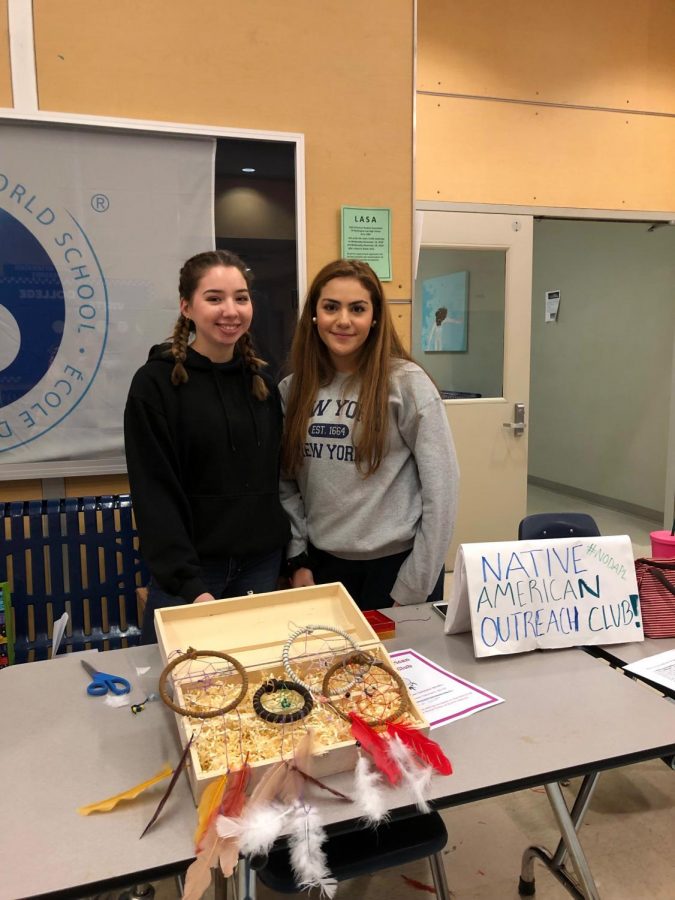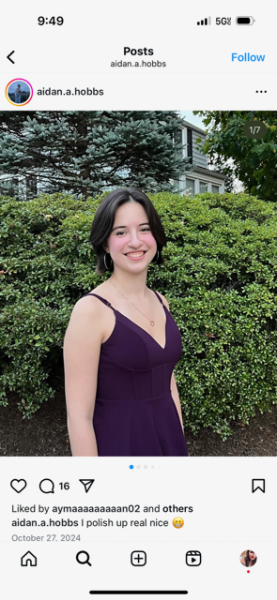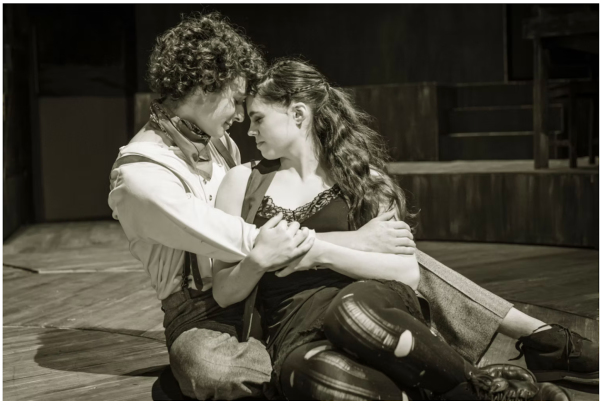The Native American Outreach Club supports tribes in quest for equal treatment
Native Americans are marginalized throughout the United States. The new Native American Outreach Club addresses this by giving support to Native American tribes that continue to face adversity today.
“The club hopes to raise awareness of some of these struggles as well as raise money for the Standing Rock Sioux Tribe,” junior Lamara Allen, club president and Standing Rock Sioux Tribe member, said.
The Standing Rock Sioux Tribe is one of the many Native American tribes that has had to endure reduction of its lands. According to daplpipelinefacts.com for the Standing Rock Sioux Tribe, tribal lands are affected by the Dakota Access Pipeline a 1,172-mile underground pipeline costing $3.8 billion that was designed to transfer crude oil from North Dakota to Illinois. The Standing Rock Sioux Tribe protested this project because they believed it would damage sacred cultural sites and contaminate their drinking water.
“Since people [Europeans] first started settling in the United States, Native Americans have lost their land,” Allen said. “They were pushed onto reservations and off of the land they had respected and lived on for centuries. Today many still live on reservations, and there is no respect for their land.”
Native Americans also face racism. According to doi.gov the Indian Arts and Crafts Act of 1990 is a law addressing cultural appropriation by prohibiting the misrepresentation of any art or craft as Native-made when it is not. In contradiction to this law, some people or brands will emulate their perceived concept of Native American art.
“Stereotypes of Native Americans I have seen are that many people will wear feathers or draw tribal designs on their clothes or themselves for games or other situations,” junior Sophia Perez, club vice president and Native American, said. “A lot of people don’t realize that wearing those feathers can be disrespectful in Native culture because they are seen as sacred, and with tribal patterns, those vary with each tribe but in general people shouldn’t be culturally appropriating.”
Thanksgiving has become a more controversial holiday since Americans often adorn what they perceive as Native American headdresses and other cultural items. These examples of cultural appropriation are frequently inadvertently drawn on in schools when children are learning about Thanksgiving.
“From early elementary school I remember we would dress up as pilgrims and Native Americans. Looking back at the time I didn’t think much of it, but now that would not fly at all,” Perez said. “So many parents would be upset and email the principal, but many kids are really just too young to really have an opinion about it.”
When it comes to Thanksgiving, students are often taught a story about the friendly relationship the Pilgrims and Native Americans had, which is not necessarily supported by fact. This idealization can leave many Americans unaware of the hardship that Native Americans have had to deal with and continue to face.
“I don’t think schools do a good job of teaching what actually happened, because they often don’t focus on the many problems Pilgrims created for Native Americans for a long time before and after the actual Thanksgiving day feast,” Allen said.
Even how schools continue to present Thanksgiving in curricula remains questionable.
“I think we have come a long way in teaching about Thanksgiving in school,” Ms. Christina Steury, AP US history teacher, said. “I do think there are still a lot of misconceptions. For instance, the idea that the Pilgrims invited the Natives to the festivities as a thank you for their help in reaping a harvest is unsupported by historical accounts. Historians remain puzzled as to how the Natives and Englishmen ended up eating a feast together.”











Dean Fleming • Dec 21, 2018 at 5:03 PM
Hello Native American Outreach Club.
During the recent holiday bazar I met some of your members. I gave them information for a friend of mine who travels the country helping American Indians protect and maintain their heritage. I just wanted to follow up to make sure you still had his contact info.
Andre Billeaudeaux
(206) 330-6079
[email protected]
Please reach out to him. He would be a great asset now and in the future.
I hope this is helpful.
BTW. Quick question.
I understand the American Indian Museum does NOT have a display of the trail of tears or if it goes that it is insignificant. If true, it is insignificant. Do you know if that is true? If not, could you try on find out and let me know?
Thank you…!
Dean Fleming
Class of 75
W-L Association VP
571.999.3400
W-L Alumni Association